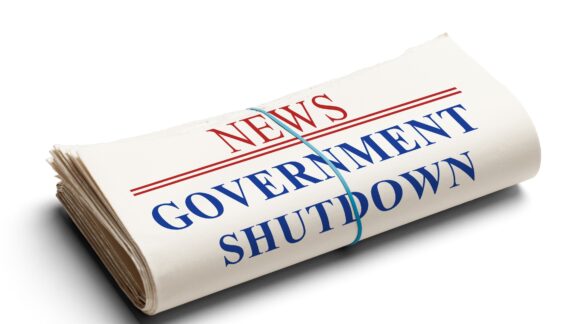Shutdown? Take the win

Photo Credit: Getty
Last-ditch negotiations are underway as another fiscal year comes to a close on October 1.
It’s that familiar crossroads: a threatened shutdown if a funding agreement isn’t reached, amid already sky-high spending and a Congress that talks fiscal restraint but rarely acts on it.
Each side blames the other for holding the government hostage over continuing resolutions (CR), but the truth is the federal government never really shuts down. Taxes are still collected, debt piles up, and “essential” programs roll on. Yet the “clean” continuing resolution to which Democrats object—the Washington term for rubber-stamping last year’s spending—confers even greater legitimacy on the very programs conservatives supposedly abhor.
In my latest Forbes piece, I argue that looming government shutdowns—as well as the debt-limit negotiations we’ll be seeing again as early as next year—need to be treated as opportunities to cut both spending and regulation and restore basic constitutional discipline over an unbounded federal state.
If there are other opportunities, I’m all ears.
A memorandum last week from the White House sent to agency heads instructing them to prepare “Reduction in Force” (RIF) plans in case of a shutdown caused great consternation and more than a few meltdowns across Democratic Hill leadership and from the media. And sure enough, the directive would go beyond the routine furloughs we’ve seen before when shutdowns occurred.
The memo specifies, “With respect to those Federal programs whose funding would lapse and which are otherwise unfunded, such programs are no longer statutorily required to be carried out.” If the money stops, the program stops, not just the staffing positions.
The real story right now though isn’t the potential shutdown commencing this week, nor this unique memo—it’s that downsizing government isn’t built into the budget process—whether normal budgeting or the abnormal CR cycle we’re on. Streamlining only comes up at these “crisis” junctures, and even then, in the strange incarnation of not happening at all if Democrats agree to the CR.
We’re deeply embedded in the spending/regulation trap. Each burst of federal spending becomes a platform for new mandates, while regulatory expansions rationalize still more spending and power down the road. It’s a vicious circle, and shutdown ultimatums may present one of the few remaining levers to interrupt it.
We’re told a shutdown means national parks close, grants get put on hold and that federal workers miss paychecks, so just to hold our noses. What policymakers fail to emphasize is the mounting problem of Washington micromanaging so much of daily life—from farm aid and student loans to disaster and health insurance and the design of dishwashers. These aren’t “essential” federal functions at all. They’re examples of how deeply Washington has embedded itself into the private sector, state and local affairs, and in our private lives.
If it’s too late to change course at this shutdown juncture, we need a reversal of the premise at the next one: program closures and staff reductions shouldn’t just happen during the next shutdown; they should be the up-front condition of keeping government open.
In addition, if we’re going to continue beyond a $7 trillion federal government, and all signs indicate that we are (even with no crisis to justify it), the very least Congress should insist on during budget negotiations is full transparency for the extraordinary regulatory effects of all that spending. Much of the resultant regulation will come not through conventional notice and comment regulation, but through guidance documents, memoranda, bulletins, circulars and administrative interpretations. Proposals like the bipartisan Guidance Out of Darkness (GOOD) Act would help by requiring agencies to post these informal “rule equivalents” online.
If we find ourselves again sucking up a continuation of Biden-level spending, we also at least need to see some concessions like enforcing existing but often neglected regulatory laws like the Paperwork Reduction Act and the Congressional Review Act; the codification of reforms such as Trump’s “one-in, ten-out” executive order; and regulatory cost budgeting paralleling the way we (supposedly) budget for spending. As we’ve detailed over the years in our Agenda for Congress, regulations should sunset automatically unless renewed. And like spending bills, Congress should have to approve major regulations and guidance documents before they take effect.
Debt limit fights and budget showdowns that now underscore how rare it is for Congress to claw back spending and regulation back should be transformed into actionable moments. The real impasse isn’t whether we fund government this month or next. It’s whether we have a constitutional government or a seemingly unbounded one. If Congress cannot bring itself to shrink government during a funding impasse, how will it ever do so when things are “calm?”
Shutdowns and debt limits have transcended being the problem—they’re among the last institutional levers the advocates of limited government have left to impel change. Rather than fear them, we should use them to terminate agency programs, devolve power back to the states, end private subsidies, grants, and partnerships, and restore the transparency and accountability that characterize limited government.
As I put it in Forbes, “Shutdown? Take the win.”
For more, see: “Turn Shutdown Theater Into A Slim-Down: Cut Spending And Regulation At Once,” Forbes